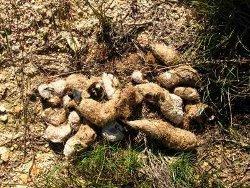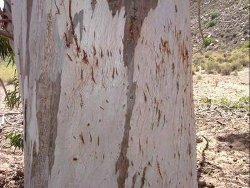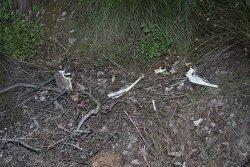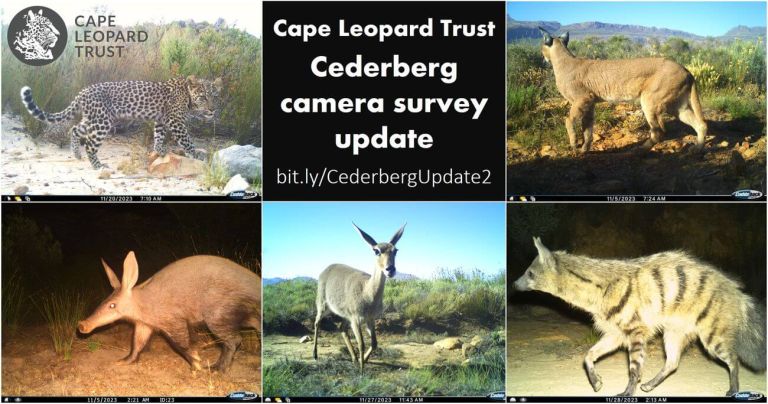Cape Leopards are notoriously shy and elusive; very few people have been lucky enough to see one – and when they do it is usually only a fleeting glimpse. So how do you study such a secretive animal in such a vast and untamed mountainous landscape? This would have been an almost futile endeavour, but fortunately, technology has given us a solution: digital cameras, containing an infrared sensor triggered by motion and heat (referred to as a “camera trap”).
Camera-trapping has proved to be a very effective way of estimating the numbers of elusive and nocturnal predators such as leopards, jaguars and tigers. It is a non-invasive and comparatively affordable option, since it does not require the capture, handling, or immobilisation of animals.
Photographs of leopards are an exceptionally useful tool, since each leopard has a distinctive spot pattern by which it can be identified, like our fingerprints. Camera traps can be deployed singly, but ideally a camera station should consist of two cameras opposite each other. Such double stations are used to compile "leopard identikits", photos of both an individual's left and right flanks, which are crucial in estimating the number of individuals in an area.
An added advantage of the camera traps is that they are like permanent fieldworkers, working day and night, in rain or sunshine. They are non-selective, capturing everything that moves, thus providing the ideal opportunity to gather data on other mammals as well. These photos give us information about prey availability, while forming part of a research collaboration with the University of Cape Town's Animal Demography Unit – namely a virtual mammal research mission, dubbed MammalMap.
Read more about MammalMAP and how you can be involved here.
How do you decide on where to place a camera trap?
Choosing the right camera trap site is very important. One must be quite sure that a leopard will pass by the camera at some stage, and because leopards are much more adept at using their rocky habitat than we are, one needs to select a site carefully. Fortunately for us, most leopards will take the path of least resistance when given a choice, and as such they often patrol their territories via well-used game paths, hiking trails, quiet jeep tracks, dry watercourses etc. These areas normally prove to be good camera trap locations.
The signs that leopards leave behind are also instrumental in selecting camera trap sites.

Pug marks / tracks / spoor
Leopard tracks are very distinctive and easily identifiable by a trained eye, although the tracks of smaller females or sub-adult males may be confused with that of caracal. Leopard tracks are easily distinguished from those of large dogs 1) by the absence of nail imprints (dogs cannot retract their claws like leopards do); 2) leopard foot pads are large in relation to their toe pads and have three lobes at the back edge; 3) dog foot pads are more triangular in shape compared to those of leopards.

Scats / droppings
The presence of hooves, claws, footpads, quills and large bone fragments is telltale of leopard droppings. The scats are also prone to turning white in the sun because of the calcium content of the bones. Leopard scat may be confused with that of caracal, but caracal scats are generally smaller and contain mostly hair. If bones are present, the fragments will be relatively small.
Leopards use scats to demarcate and mark their territory, warning other individuals to keep away. Dominant animals therefore tend to defecate in very visible places, often on top of grass tufts and low bushes in the middle of or next to trails and jeep tracks.

Scratch marks
Leopards sharpen their nails on tree trunks in the same way house cats do. Furthermore there are small glands at the base of the leopard's nails, the secretion of which is deposited on the bark as it scratches – another way of marking their territory.

Kill sites
Leopards have exceptionally strong jaws and are known to eat almost the entire carcass, in contrast with caracal that mostly only eat the softer parts of the body and leaves the large bones. Although not encountered as often as tracks or scats, certain kill remains can be telltale of leopard activity.
Intensive scouting for these signs is very important to determine the likelihood of a leopard walking past a possible camera trap site, and while looking for these signs, data on the tracks and scats of other mammals are also gathered.



















